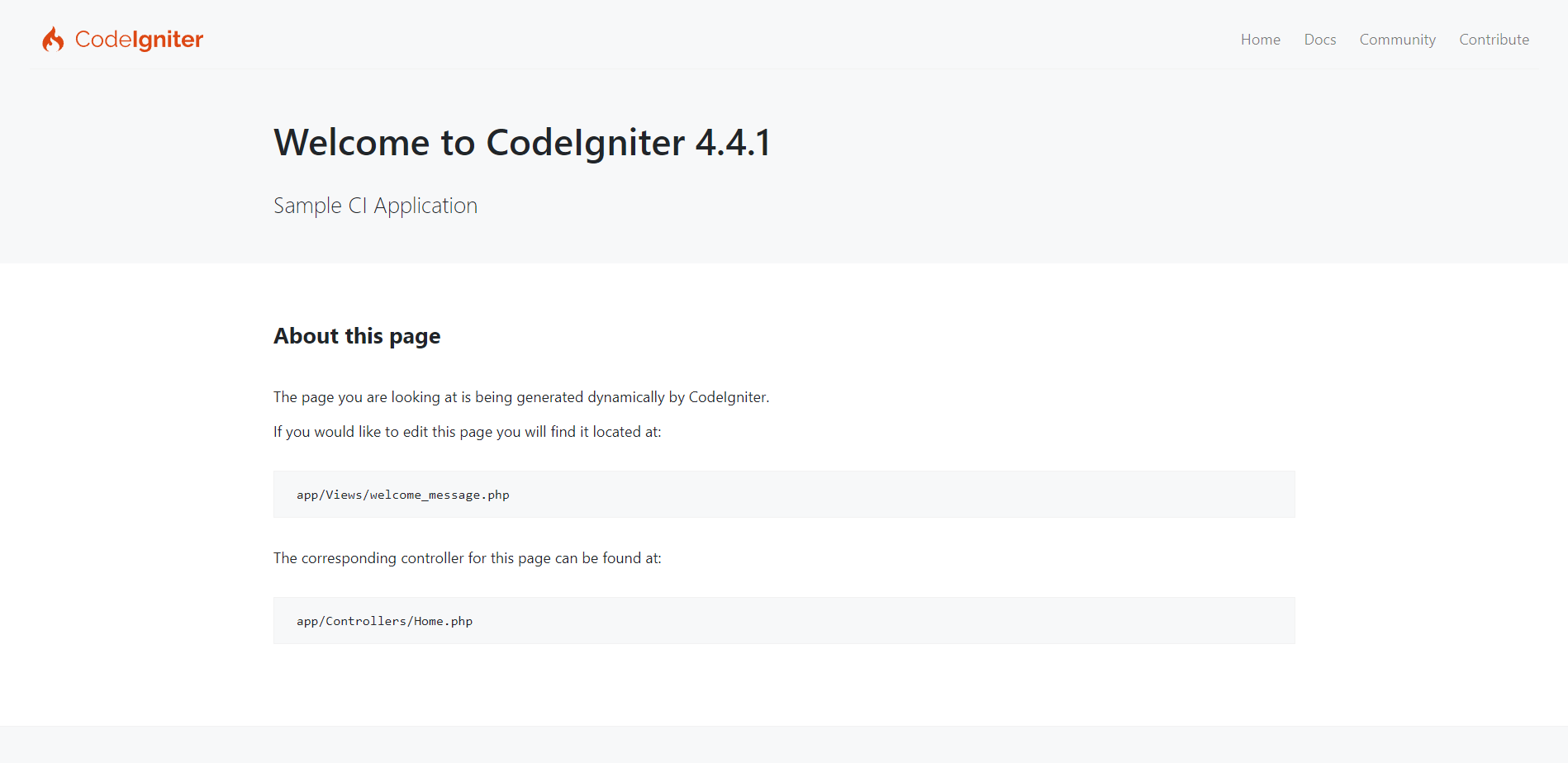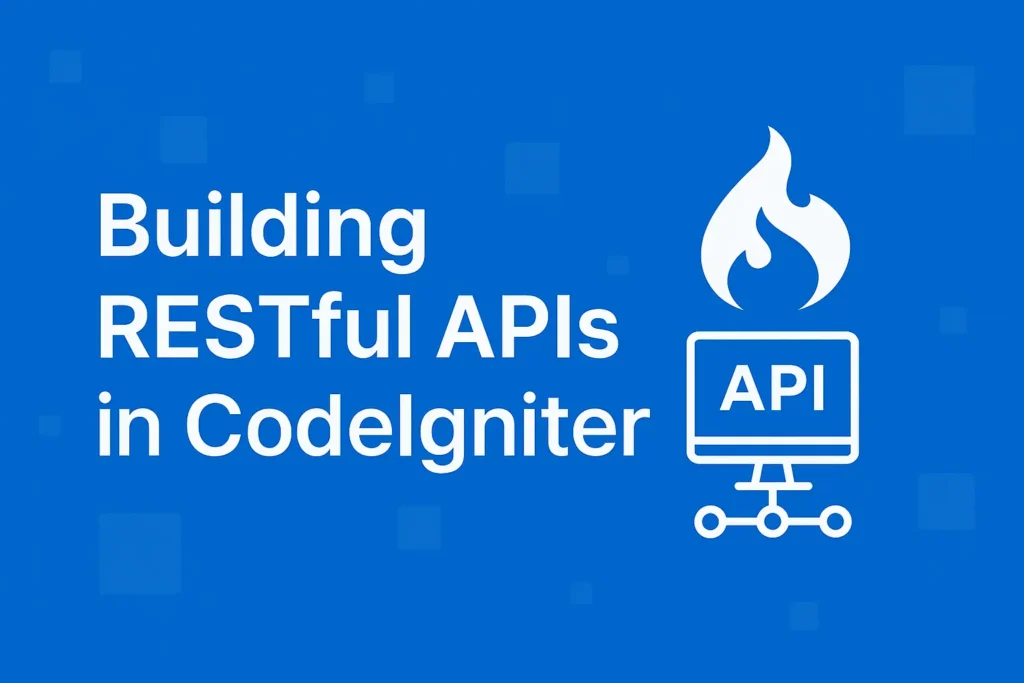
In this article, we’ll see CodeIgniter Introduction.
Table of Contents
What is Codeigniter
Codeigniter is a fully-featured PHP framework based on MVC. MVC means Model View And Controller. It is used for making dynamic websites and web applications.
If you are already building a PHP Application, It will help you to do it better and more easily. Also With It, you can save time, make your web more robust, and your code will be easier to read and maintain.
CodeIgniter (CI) is free, lightweight, and simple to install. Also, You can get it from http://www.codeigniter.com. CI was written by Rick Ellis, rock musician turned programmer.
CodeIgniter‘s goal is maximum performance, capability, and flexibility in the smallest, lightest possible package.
Objectives:
- Dynamic Instantiation. In CodeIgniter, components are loaded and routines are executed only when requested. No assumptions are made by the system regarding what may be needed beyond the minimal core resources. So, the system is very lightweight by default. The events, as triggered by the HTTP request, and the controllers and views you design will determine what is invoked.
- Loose Coupling. Coupling is the degree to which components of a system rely on each other. The fewer components depend on each other the more reusable and flexible the system becomes. So, Our goal was a very loosely coupled system.
- Component Singularity. Singularity is the degree to which components have a narrowly focused purpose. In CodeIgniter, each class and its functions are highly autonomous in order to allow maximum usefulness.
Benefits:
- Lightweight and Fast: One of the key advantages of it is its lightweight nature. The framework is designed to be lean and fast, with a small footprint that doesn’t require much server resources. This makes it an ideal choice for developers who need to create high-performance web applications without sacrificing speed or efficiency.
- Modular Design: It is built on a modular design that allows developers to easily add or remove features as needed. Each module in the framework is designed to be independent, making it easy to integrate with other components or third-party libraries. This makes It a highly customizable framework that can be tailored to suit the specific needs of your project.
- Flexible Database Support: It offers flexible database support for a wide range of database management systems, including MySQL, PostgreSQL, SQLite, and Oracle. The framework includes an active record implementation that simplifies database queries and provides a convenient way to work with databases in PHP. Additionally, It supports database migrations, which allow developers to easily manage database changes across different environments.
- Built-in Security Features: It includes a range of built-in security features that help protect web applications from common vulnerabilities, such as cross-site scripting (XSS), SQL injection, and CSRF attacks. The framework includes features like form validation, input filtering, and output encoding, which make it easy to secure your web applications without having to write complex code.
- Easy to Learn and Use: It is designed to be easy to learn and use, even for developers who are new to PHP web development. The framework includes a user guide that provides detailed documentation on all of its features, and there are plenty of online resources and tutorials available to help you get started. Additionally, It has a clean and elegant coding style that makes it easy to write efficient and maintainable code.
Installation:
CodeIgniter has two supported installation methods: manual download, or using Composer.
We’ll install it using Composer.
Before you start the installation, could you ensure you have the composer already installed? you can verify using the ‘composer -v’ command in your terminal
Note: CodeIgniter4 requires Composer 2.0.14 or later.
Step 1: Go to the root directory of the server (e.g. www in the root directory of laragon server that I’m using) and run the “composer create-project codeigniter4/appstarter my-ci-app” command in your terminal. here ‘my-ci-app’ is the name of your project directory that will created.
Note: If you omit the “my-ci-app” argument, the command will create an “appstarter” folder, which can be renamed as appropriate.
Step 2: After installation is completed, go to the ‘my-ci-app’ directory. Open the app/Config/App.php file with a text editor and set your base URL to $baseURL. If you need more flexibility, the baseURL may be set within the .env file as app.baseURL = ‘http://localhost/my-ci-app/’. (Always use a trailing slash on your base URL!)
Step 3: CodeIgniter 4 has a local development server, leveraging PHP’s built-in web server with CodeIgniter routing. You can launch it, with the following command:
php spark serve
You can use the –host CLI option to specify a different host to run the application at:
php spark serve --host example.de
You can see output like the following

That’s it!
You can follow the below video for the installation process:
Advantages and Disadvantages
Advantages
- Customization: as a business owner, you always wanted to customize the website according to your business and industry sector. it provides more customizability compared to any other frameworks in the market.
- MVC-based system: It works on MVC(Model View Controller) architecture which enhances the dependency of this platform. MVC structure also helps to improve code flexibility and decrease the chances of error.
- Faster Development: It offers faster development services that you can’t expect from any other framework. In Codeigniter, you can expect better functionality with minimal code that’s why businesses choose it for web development.
- Improved SEO: Another main reason to choose it is that its customized code helps you to optimize websites that result in improved rankings in organic search.
Disadvantages
- Lack of libraries
- Company-driven instead of community-driven
- Irregular releases
- The framework itself has no built-in ORM
Hope this article helps!


